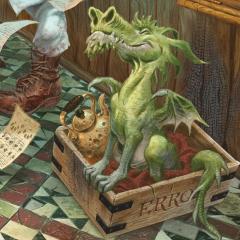Search the Community
Showing results for tags 'theory'.
-
I was wondering whether anyone has looked into the the key relationships, if any, between successive cues or maybe a predominant key or tonal center across an entire score by JW. Do you think this is an important consideration when JW writes a score?
-
I was thinking about this subject in bed last night. When we usually talk about pedal points we meant something in the bass, or a single tone. But what about a ostinato that when heard over a rising or falling chord progression bass line create a temporary sense of extended harmony? I'm going to use three film music examples to render my point. 1) Danny Elfman - Hulk At 0:22 a descending ostinato for 3 flutes based around EMaj7 is introduced, in tight, clustral voicing. After rising horn and trumpet lines build to a crescendo, we reach a climax at 0:41. Here we have a series of rising chords in the brass - E > F# > G# > G#/A# and so on. This is a typical Lydian progression, but what makes the second chord (F#) so compelling is its juxtaposition with the EMaj7 ostinato in the flutes and strings. I believe there's also a sustained EMaj7 here, but could I be wrong. These two structures blend into one for the listener, and creates the feeling (and illusion) of a 13th chord. It's a much more modern, uniquely American sound than we're accustomed to for these kind of films. No false 19th century diminished chords and Sturm und Drang here. 2) Hans Zimmer - Man of Steel http://www.youtube.com/watch?v=ezRoICYz7XA Passage from 0:35 onwards. This time round we have no chords, just a bass line, but the same tonality is implied. In the upper structure we have an ostinato based around FMaj7 from sopranos and violins, and low 16th note 'pulse' pattern based around similar intervals, from strings (hard to tell which). The bass centers around A, then F (creating the feeling of a full bodied FMaj7), repeat, then up to G. This is where as in the Hulk example, we have have an implied G13 (or perhaps more accurately, G13sus). 3) John Barry - A View to a Kill http://www.youtube.com/watch?v=f98i7N8g9Pw I might be stretching this one a bit, but in the descending Fm bass line at 0:42 (lifted straight from OHMSS) - the low Eb coupled with the DbMaj7 in the the violins and violas once again creates that brief 13th sound. A beautiful passing moment, effectively modernising the OHMSS motif. Does this make any sense?
- 30 replies
-
- donkey porn
- theory
-
(and 2 more)
Tagged with:

